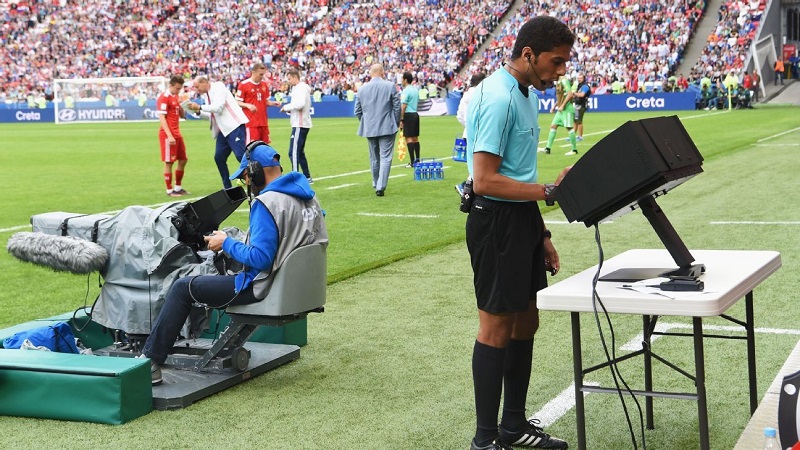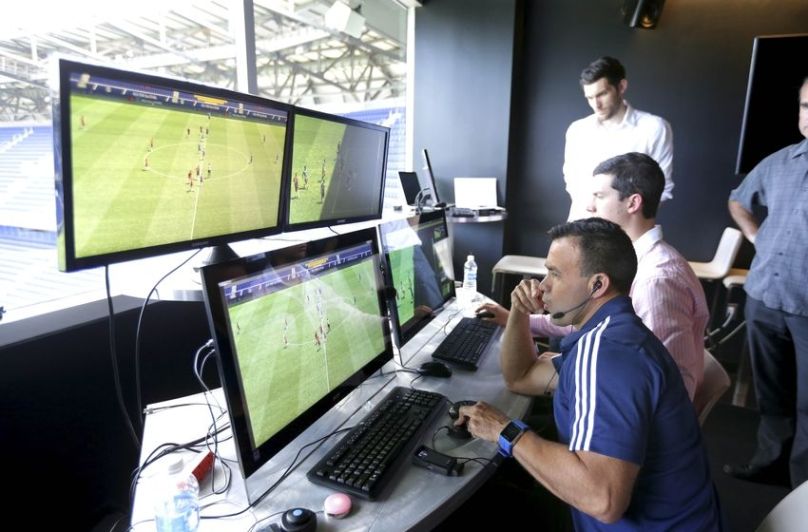
Video assistant referees (VAR) could be used at the World Cup in Russia later this year after the committee responsible for the laws of football pronounced itself “encouraged” by tests.
Since March 2016, VAR has been tested in more than 20 competitions and in more than 800 matches, unleashing mixed reactions and a heated debate.
On Monday, the International Football Association Board (IFAB), the rule-making arm of world governing body FIFA, heard a statistical presentation on the results and pronounced them “positive and encouraging”. The board said on its website that “the experiment has been thorough”.
IFAB said it would vote on a proposal to ensure international consistency in the use of VAR at its general meeting in Zurich on March 3. That could pave the way to using the technology in Russia.
“The philosophy we laid out from the start is being respected. We wanted the minimum of interference in the game and the maximum of benefit,” said an IFAB spokesperson in a telephone interview.
In eight percent of matches video had a “decisive impact on the result” and in one in four a “positive impact”, according to the report.
The report countered criticism that VAR breaks the rhythm and fluidity of the game, insisting that “lost time” caused by reviews represents, on average, one percent of playing time, a lot less than free-kicks, throw-ins or goal-kicks.
Errors are also relatively rare. VAR missed a “clear and manifest” refereeing error in only five percent of the test games, a number that IFAB deemed “very encouraging given the short time frame of testing and inevitable human errors”.
VAR has been tested in international competitions such as the Confederations Cup, as well as European leagues like the German Bundesliga and Italy’s Serie A, and cup competitions in England and France.
But not everyone is convinced by its success.
– ‘Simply impossible’ –
“At the start I was for, now I am doubtful,” French former international referee Bruno Derrien told AFP.
“Of course, VAR will probably help the referee in certain situations, that’s obvious.
“But in a lot of cases, the pictures will be open to interpretation. I do not condemn it completely, but at the World Cup, it may be a bit early.”
Former German referee Bernd Heynemann is even more critical of the idea of using VAR in Russia this summer: “It is simply impossible that it will work with just six to eight weeks of preparation.”
IFAB needs to be careful not to “disempower the referees”, warned another French former referee Joel Quiniou.
“You have to be careful and not use it all the time. I think the experiment has allowed people to see the limits” of VAR, he said.
Others support VAR without reservations, emphasising that it can prevent scandals in big competitions.
“?Those who have not yet come round to VAR will end up doing so. We cannot go backwards,” said Marcello Nicchi, president of the Italian union of referees.
The goal of VAR is to correct clear and obvious refereeing errors and can only be used in four situations: after a goal, a penalty, a direct red card or to correct an identity error of a sanctioned player.
That can mean making offside rulings based on virtual lines projected on the television image. But these, it seems, can be deceptive.
IFAB warned, in a document posted on its website on Monday, that “checking offside positions of players has proven to be one of the more difficult tasks.
“The exact pitch dimensions, including any physical camber on the field as well as distortions of the camera lenses, make it very difficult for a virtual line to be drawn that accurately represents a true straight line.”
IFAB said it was working on developing systems that calibrate offside lines. – Agence France-Presse


































